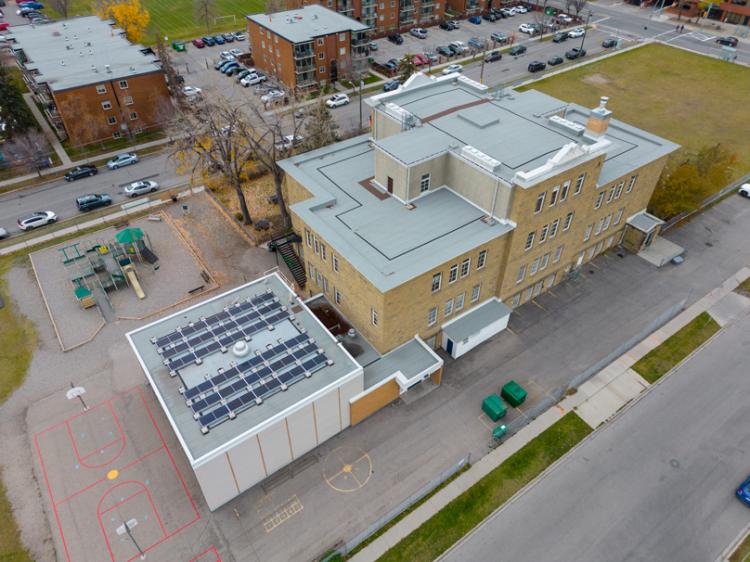With more than 250 buildings spread across the city, the Calgary Board of Education is continually looking for ways to improve energy efficiency, reduce costs and reduce greenhouse gas emissions. One way this is demonstrated is through a commitment to solar energy - both installation and education.

Phase Two of the Solar for Schools project was completed earlier this year with 15 new solar photovoltaic (PV) systems installed on CBE schools, bringing the total number of CBE schools with solar generation to 47.
"We have made commitments in the CBE Sustainability Framework 2030 to reduce GHG emissions and increase school energy generation from renewable energy systems," said CBE Sustainability Coordinator Olena Olafson.
With this most recent round of installations, the CBE's total installed capacity is now 4,865 kW DC which will generate approximately 5,956 MWh/yr or roughly seven per cent of the CBE's total electrical consumption.
In June 2021 the Board of Trustees authorized the use of capital reserves to enhance the solar power portfolio in CBE schools. Approximately $2.7 million of the funding was provided by the Municipal Climate Change Action Centre (MCCAC) Solar for Schools program. The MCCAC is a partnership of Alberta Municipalities, the Rural Municipalities of Alberta, and the Government of Alberta. Funding for the Solar for Schools Program was provided by the Government of Alberta.
In order to be a part of the Solar for Schools program, participating schools must agree to integrate an educational component into the students' curriculum covering the importance of taking action on climate change and how renewable energy can help achieve this goal.
"Through this initiative, we are able to offer real-life student learning opportunities in a way that models the behaviour students will need to contribute to a sustainable future," said Olafson.
Each school has access to an energy portal dashboard called SolarVu. The web-based platform continuously monitors the performance of the system and real-time data collection on energy production, revenue, status and trends from the solar panels.
There are a number of lessons and tutorials available to staff and students to learn about solar energy and their solar PV system. For example, Grade 5 students at Hillhurst School have been utilizing SolarVu to better understand the energy usage of their school as well as the impact of alternative energy systems.
Grade 3-4 students at the school have been learning about electricity and renewable energy. Students explored and built mini hand generators with their understanding of simple machines and electricity. Students also looked at household and global energy consumption and the impact that consumption has on our world.
A teacher from Hillhurst School spoke of the learning benefits and said: "The entirety of the process has made the learning for the students involved meaningful, challenging, and connected to the world around them. Students were motivated to explore, learn, and apply their knowledge to solve problems in their world."












